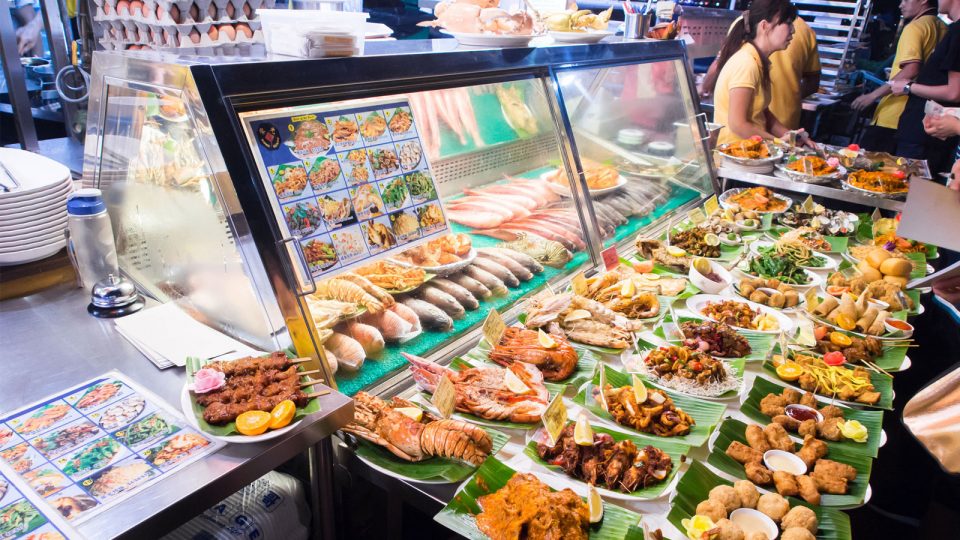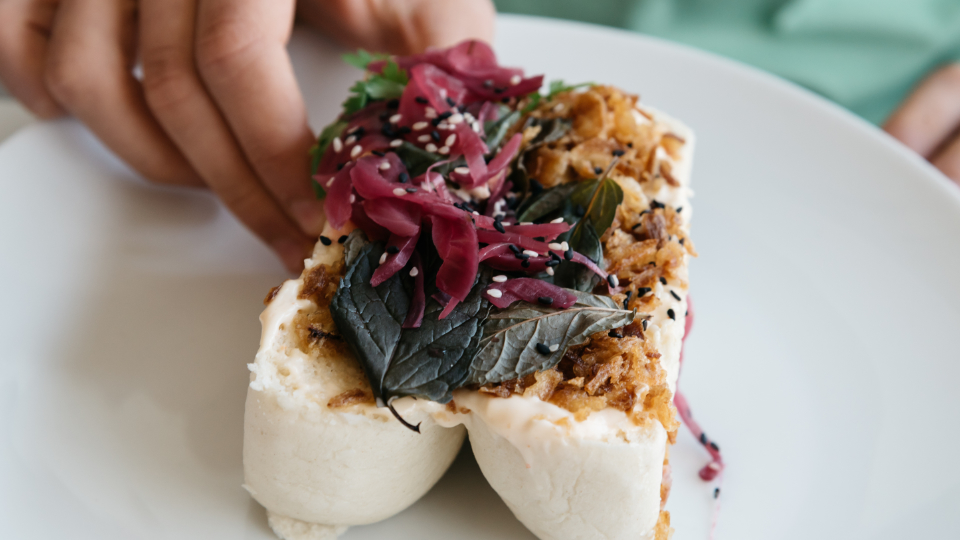We live in a food paradise and one in three Singaporeans eat out more than they do at home.
While we all know it’s healthiest to cook our own meals, our hectic work lifestyle makes eating out the more convenient option. But does that mean those with diabetes who eat out are doomed to inevitably high blood sugars or stuck with yong tau foo and salad for the rest of their lives?
Not necessarily! Let’s look at a whole range of yummy and healthy diabetes friendly local foods to prove it’s not mission impossible. More ideas can be found on the blog post here. The main thing is to reduce the carbohydrate content, focus on plenty of fresh vegetables and lean protein, and choose the higher fibre (lower Glycemic Index) foods.
These foods may not be ‘perfect’ for diabetes but it’s hard to eat perfectly when eating hawker food, so this article includes tips to ‘healthify’ the meal. Each person also have very individual responses, so test your blood sugars pre- and post-meals to figure out the best dishes for your own body.
Breakfast ideas
1. Peanut butter toast with poached eggs
Lower in sugar and saturated fat than its kaya counterpart, peanut butter toast is a tasty and healthy breakfast option. Toast Box has multigrain options available. Poached eggs are also a source of low-fat protein so make sure you pair it with the toast to lower the blood glucose spike.
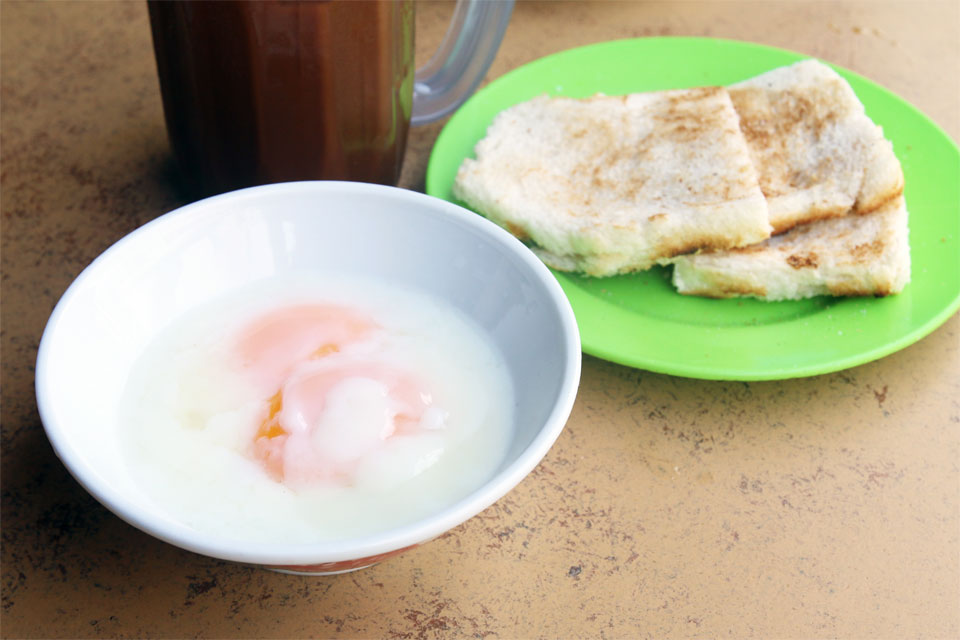
2. Soon kueh
Two pieces of this turnipy goodness is 178 calories and 37g carbohydrates. Hold back on the sweet black sauce which might send your blood sugars sky-high!
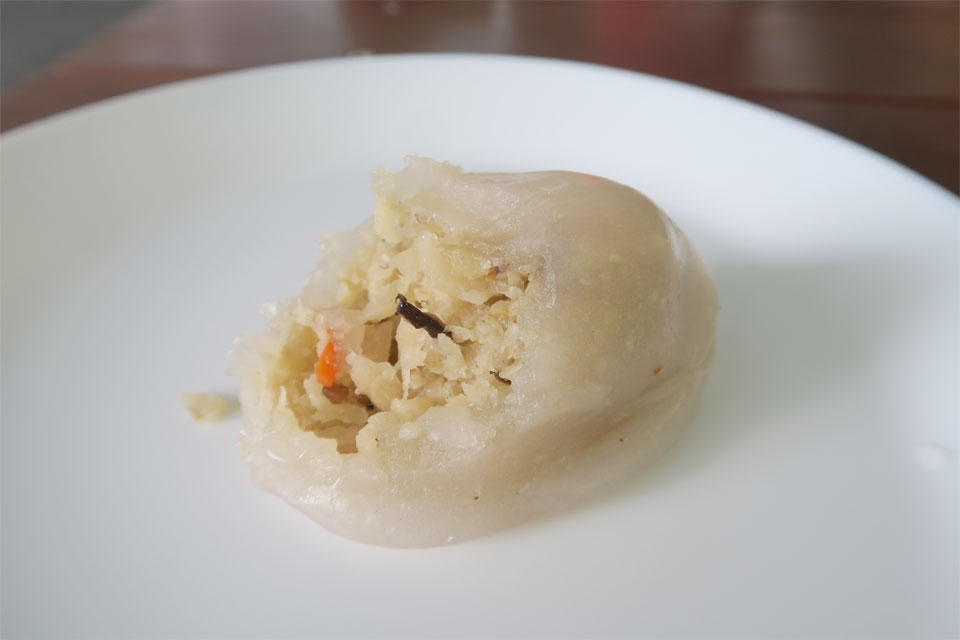
3. Popiah
One piece of popiah will give 188 calories, 14g carbs, and similar to soon kueh, chockful of fibre from the turnip. Watch out for how much sweet sauce, pork skin or fried crumbs they add in (ask for less or none of those!).
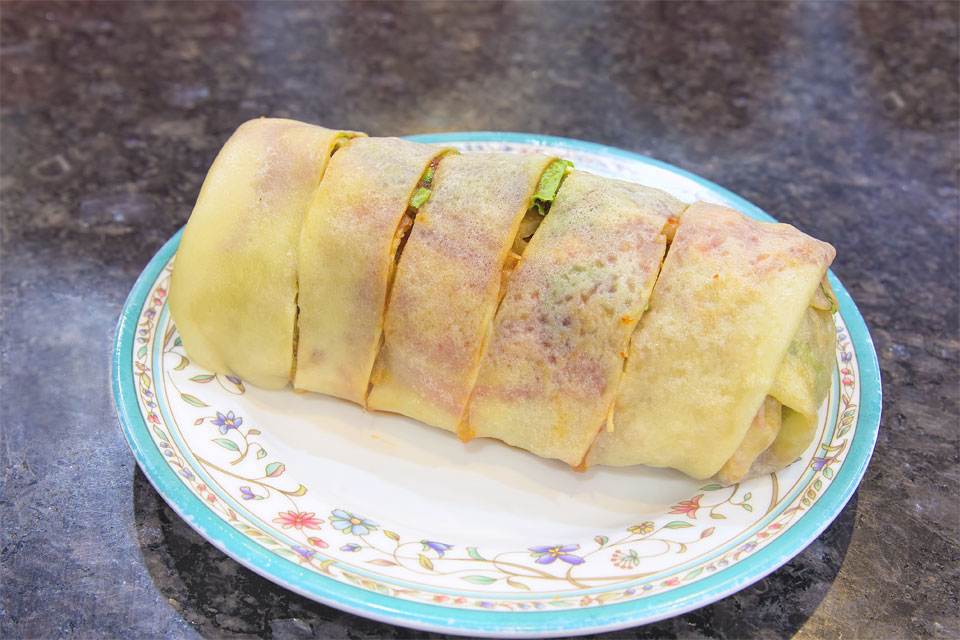
4. Oats with no-sugar soymilk
Although difficult to find in a hawker centre, oats are available at Mr Bean (but do request for no or just one riceball as they contain sugar). Oats are high in soluble fibre while soymilk contains protein, both of which can help release the carbohydrates slowly into your blood.
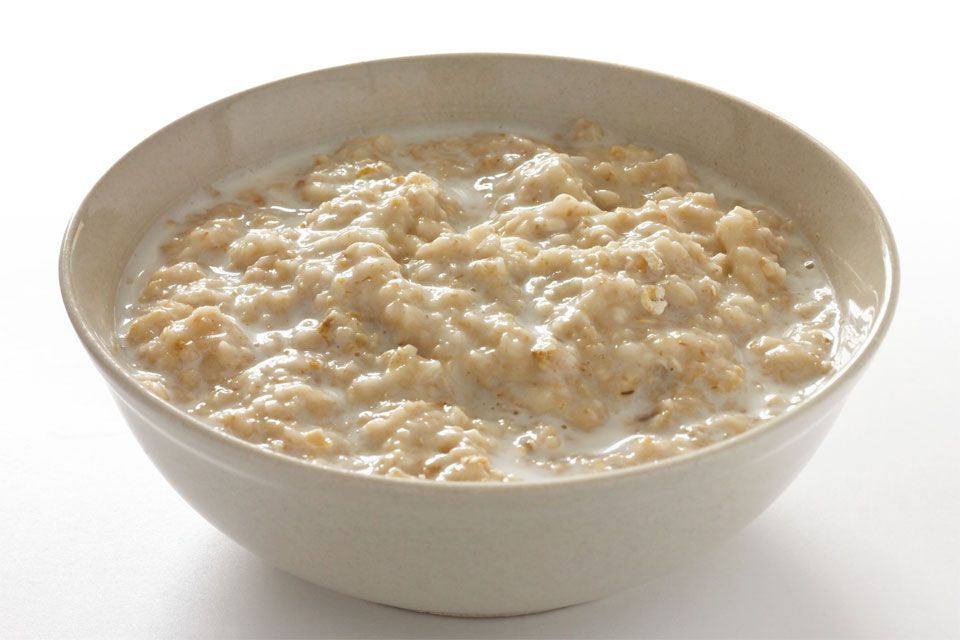
5. Bao and Tea
If you’d like to indulge in bao, avoid sugary fillings like kaya, custard or char siew. Instead, opt for wholemeal vegetable or chicken bao, and pair it and Chinese tea to help lower the blood glucose levels for a healthier breakfast.
Main meal ideas
6. Chappati or thosai (plain) with vegetables and chicken tikka
Chapati has more fibre compared to roti prata and naan, while thosai is another low-fat Indian bread. Pair one piece with non-starchy vegetables and lean protein to make a healthy plate.
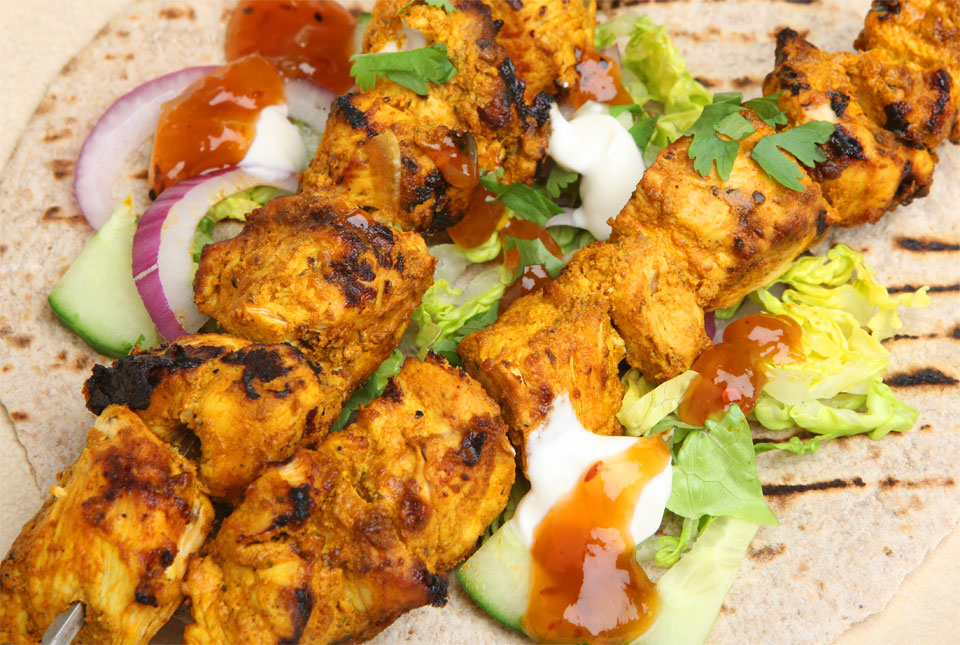
Rice
Rice is our staple food yet has earned a bad reputation for diabetes. However, it can definitely be enjoyed as part of a balanced diet. Here are some ways to make rice meals healthier:
- Ask for less or half rice
- Opt for brown rice if available to bump up the fibre
- Go for plain rice instead of flavoured (e.g. briyani, chicken rice, nasi lemak)
- Say no to gravy (which adds an extra 100 calories!)
- Get plenty of vegetables to pair with it (not potatoes or yam: there will be too much carbs if you’re eating the rice as well)
7. Mixed vegetable rice
The most versatile choice among diabetes-friendly local foods, you can mix and match as you like. Ensure you choose non-deep fried lean protein options like tofu or soy sauce chicken and stir-fried non-starchy vegetables (ideally limit curry vegetables, which are cooked with coconut milk containing saturated fat which increases our cholesterol). As a general rule, go for 2 veg + 1 protein.
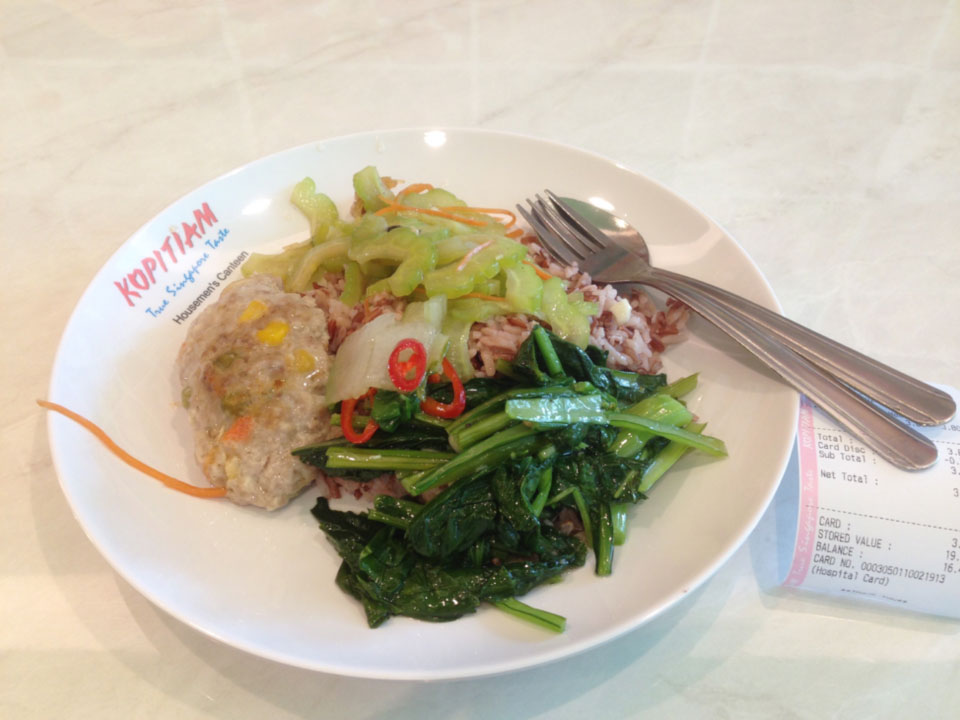
8. Nasi Padang
Ideas for healthier sides include assam fish, boiled or scrambled egg, ayam masak merah, stir-fried tempeh, and vegetables.
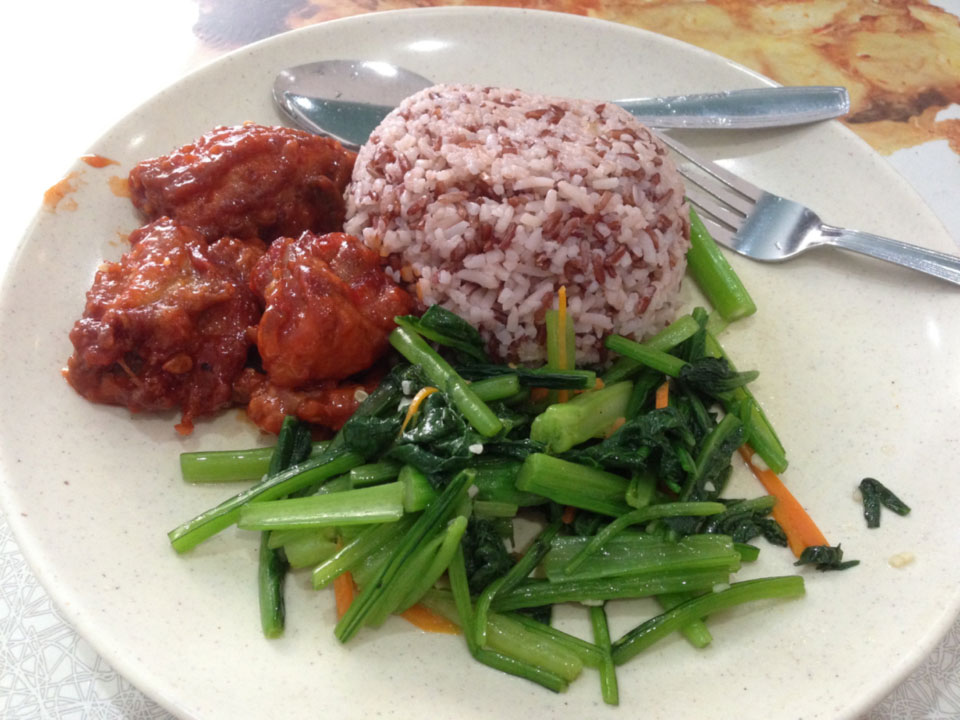
9. Vegetarian rice
Although it’s tempting to choose fried mock meats, swap this with non-fried protein, for example steamed egg or tofu, scrambled egg, and braised tofu skin or egg tofu. This will cut down on calories and keep your weight in check.
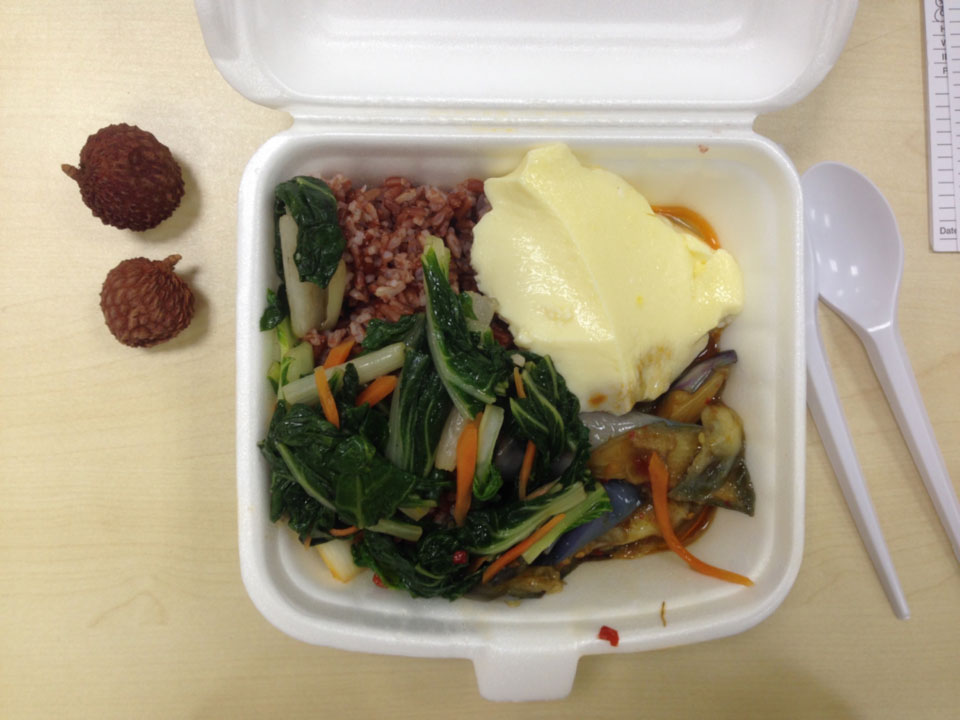
10. Gado gado
The biggest problem with this Indonesian dish is the sweet peanut sauce that it’s drowned in. Ask for it in a separate bowl to add just a little bit to flavor your meal. Another tip is to have less potato, lontong and keropok, and more salad.
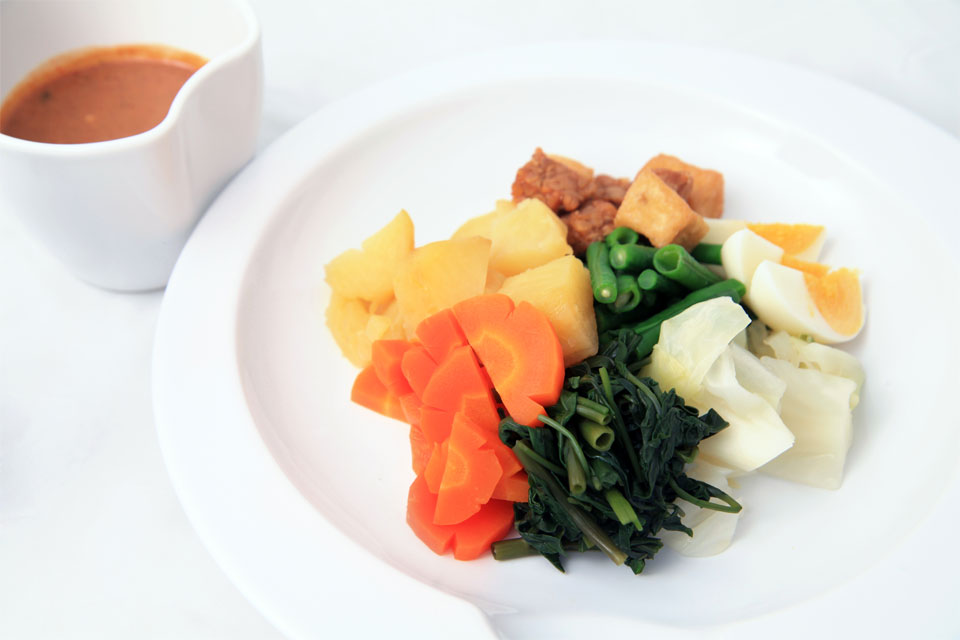
11. Chicken rice
Believe it or not, chicken rice can be made healthy! Just have it as a set with vegetables (sans oyster sauce and fried shallots), ask for more cucumber slices, change from flavoured to brown (or plain) rice, and take the skin off the chicken. Tada! A low-fat, balanced meal. But now I hear you complain that it’s not chicken rice without flavoured rice!
The trick is to have it just occasionally, flavour with a bit of the chicken soup, and if you’re sharing with a friend, consider having one bowl flavoured, one bowl unflavoured rice so that you can have half of each (and halve the fats and salt).
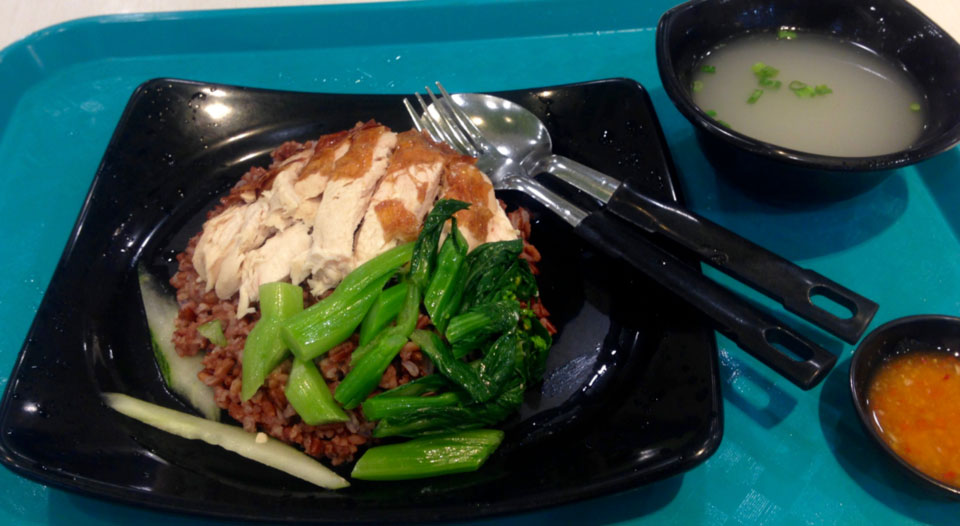
12. Chicken or watercress soup and brown rice
Resist temptation to lap up the salty soup and enjoy the ingredients with plain brown rice. Steer clear of yam or pumpkin rice: these have extra saturated fat and sodium added!
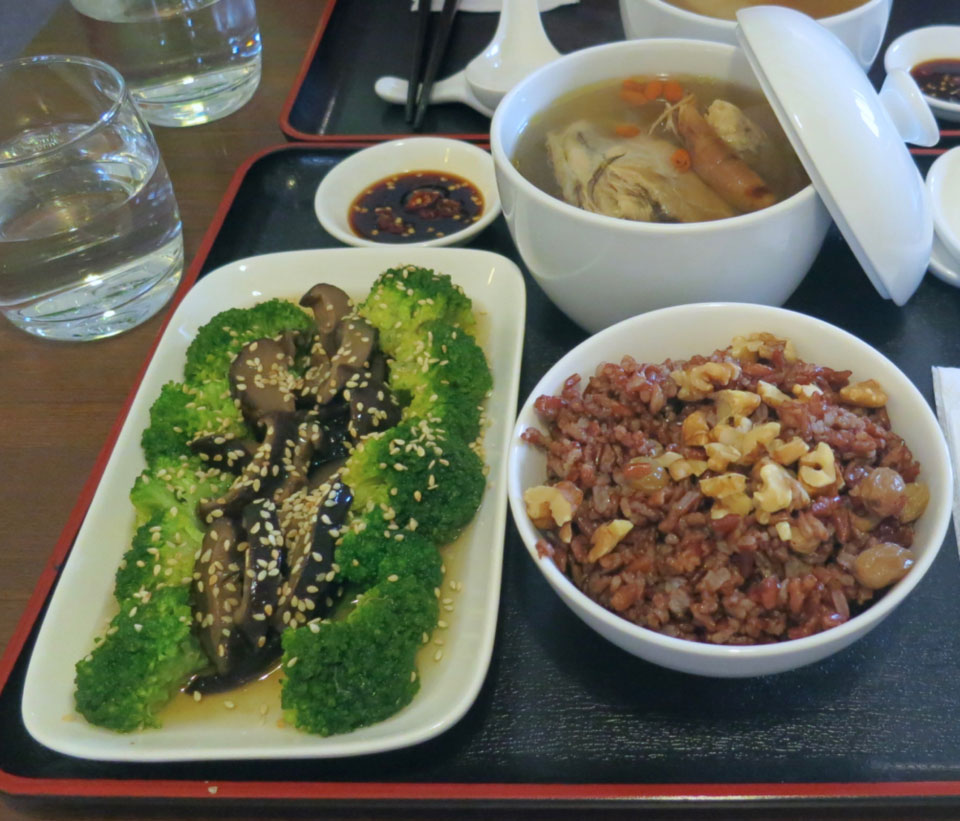
13. Thunder tea rice
This Hakka speciality has plenty of nutritional benefits going for it: filled with vegetables, herbs and an amazing source of fibre and antioxidants. Just ask for brown rice, less salted vegetables and ikan bilis to reduce the salt.
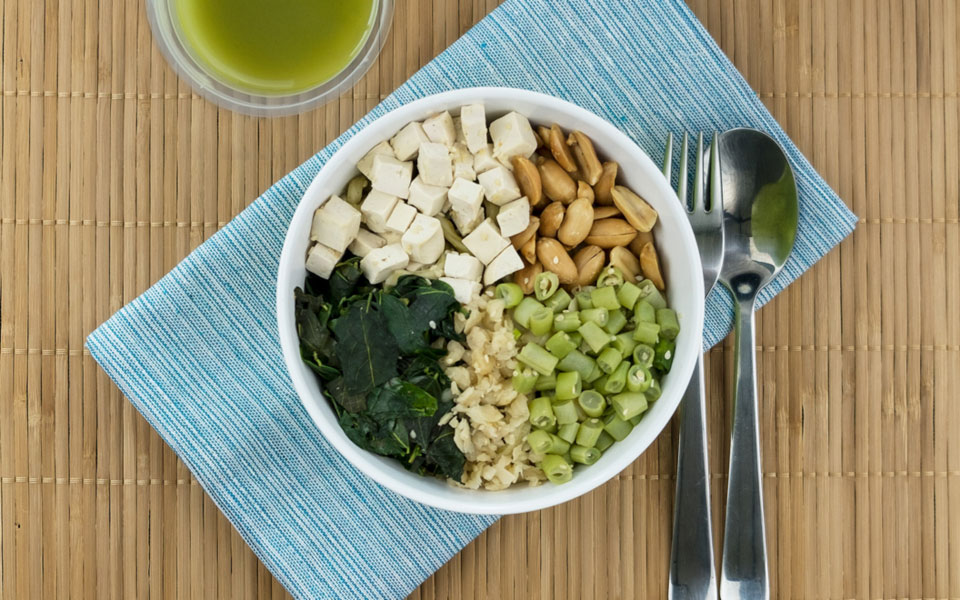
14. Teo Chew Porridge
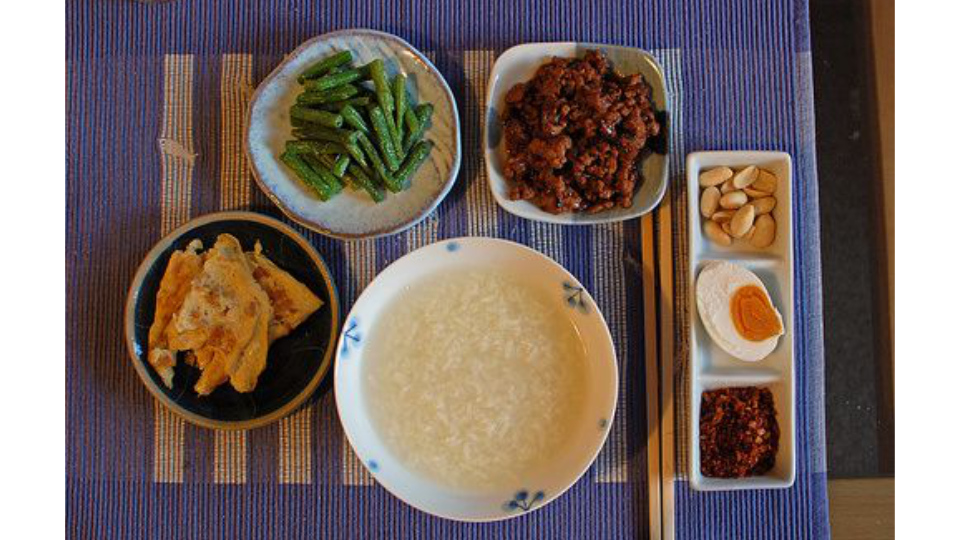
Despite the low-calorie nature of porridge, many of the side dishes are high sodium and fat. So, give the sweet and sour fried pork and preserved vegetables a pass. Instead, pick a steamed fish with some green leafy vegetables and braised tofu, meat or eggs. Opt for sweet potato porridge to increase fibre and vitamins, and have only half the porridge, to reduce carbohydrate content.
15. Hotplate Saba Fish or Bibimbap
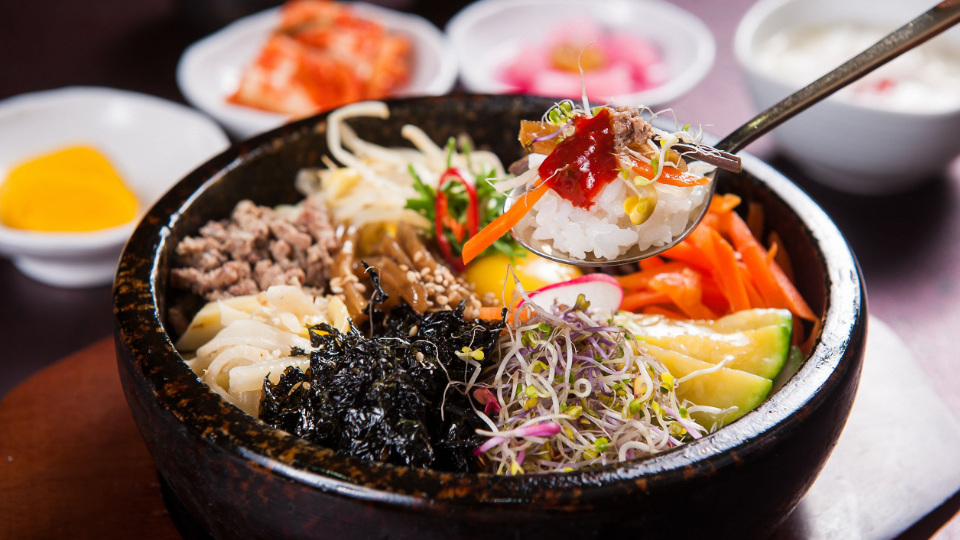
Mix it up at the Japanese or Korean stall. Get saba fish with more cabbage, or get a bibimbap. Load up on some kimchi which has been shown to have anti-diabetic effects. The key is also to ask for less rice.
Noodles
Soupy noodles are your best bet as they’re lower in fat and calories. Unfortunately, soup noodles are notorious for being high in salt which spells bad news for your blood pressure! Points to improve the nutrition are:
- Carb portions are usually too big; combat this by requesting less noodles and more veg
- Leave the soup behind to halve the sodium
- You can also get dry noodles like dry fishball or minced pork noodles, but ask for half noodles and less sauce
16. Sliced fish beehoon
A much better option than fried fish or fishball (which adds not only carbs but also fat and salt). It’s best to enjoy this without evaporated milk, which contains 9% fat and adds in carbs too.
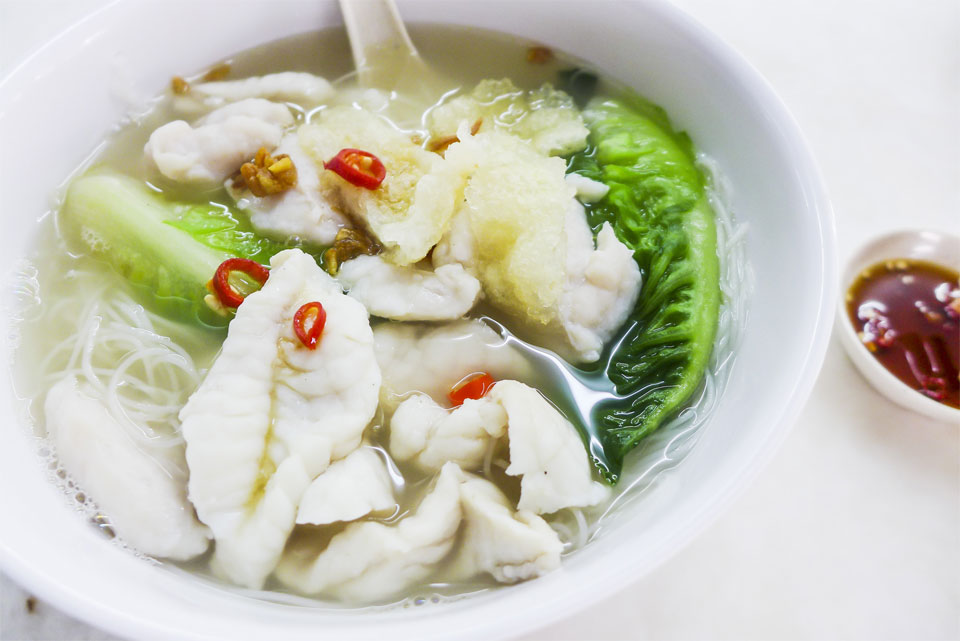
17. Ban mian or tom yum beehoon
Besides not drinking soup, refrain from ikan bilis and fried shallots, which add extra salt and saturated fat to your meal and isn’t great for the heart.
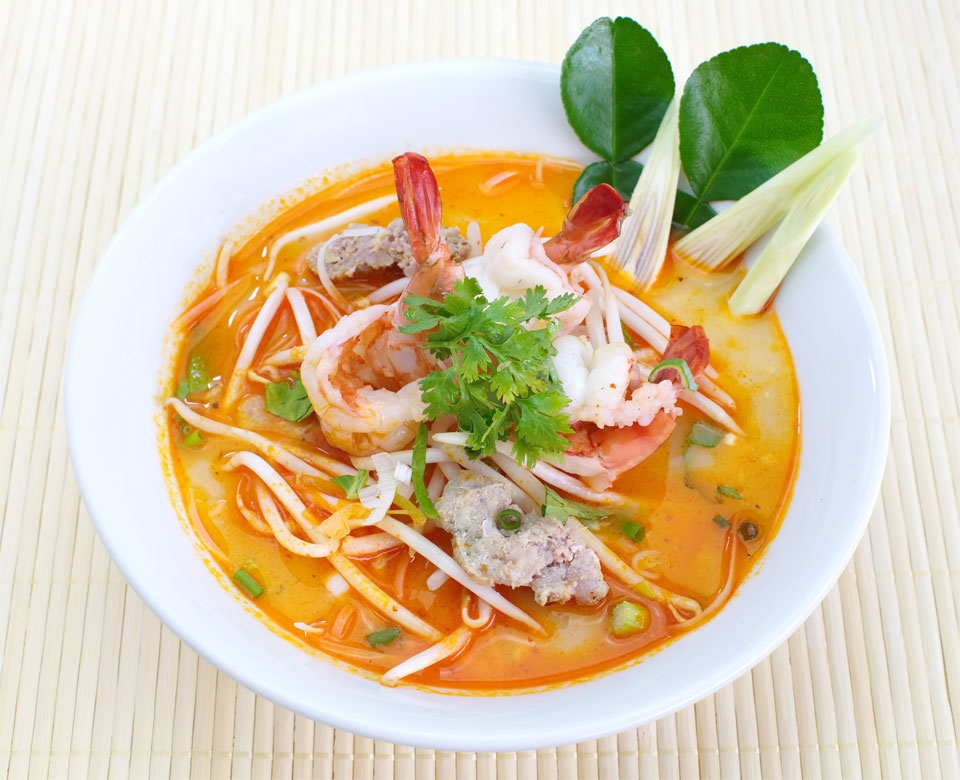
18. Yong Tau Foo
Try to choose more vegetables, and limit to at most 1-2 fried items. Go easy on the sweet sauce if you want your yong tau foo to be healthy!
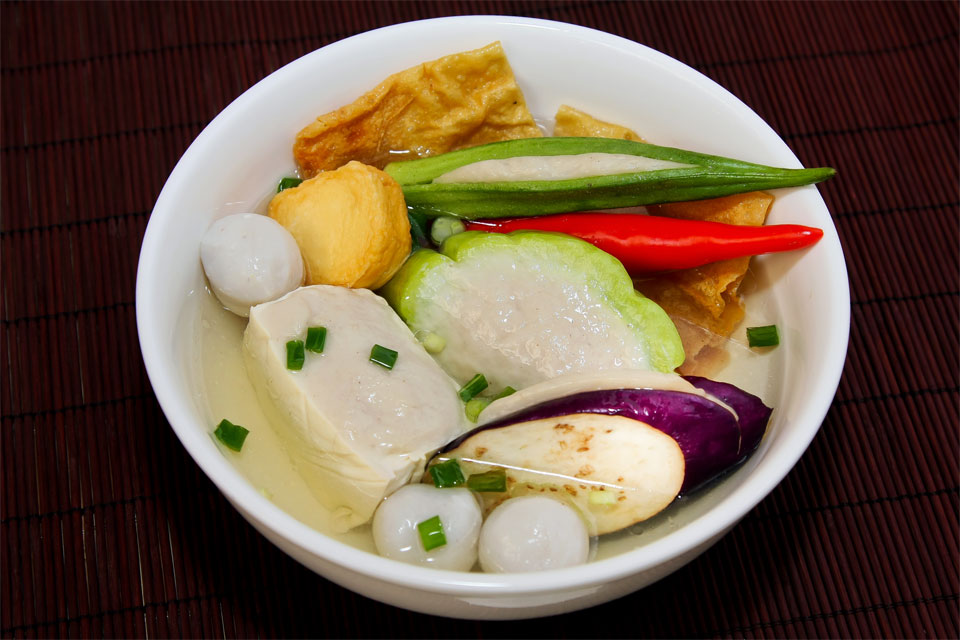
19. Prawn mee soup
A lower calorie and fat alternative to fried Hokkien mee, add more taugeh to boost the fibre.
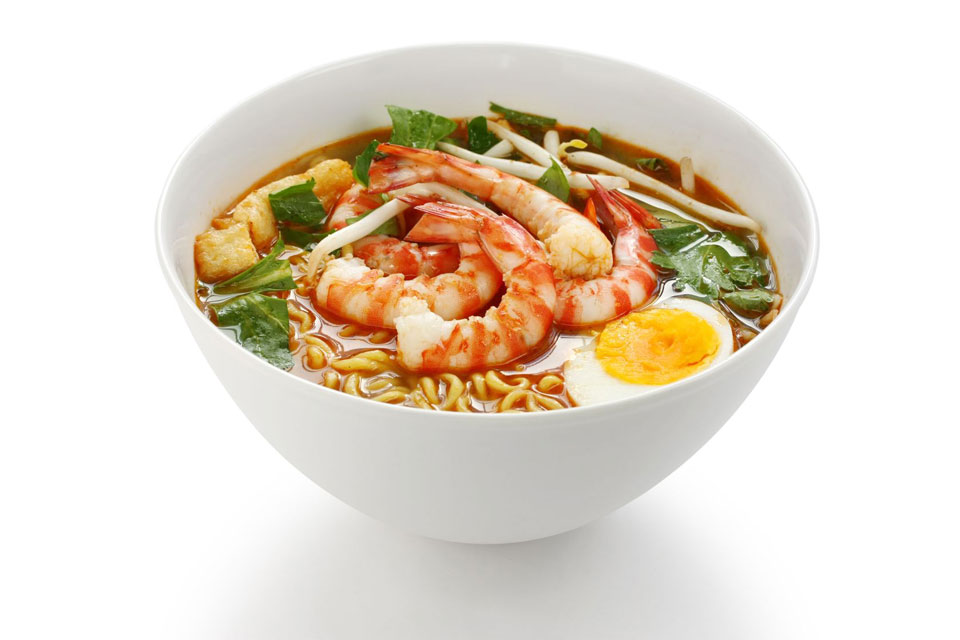
20. Ipoh hor fun with chicken
Enjoy this without guilt by adding a plate of taugeh, requesting less sauce and removing chicken skin.
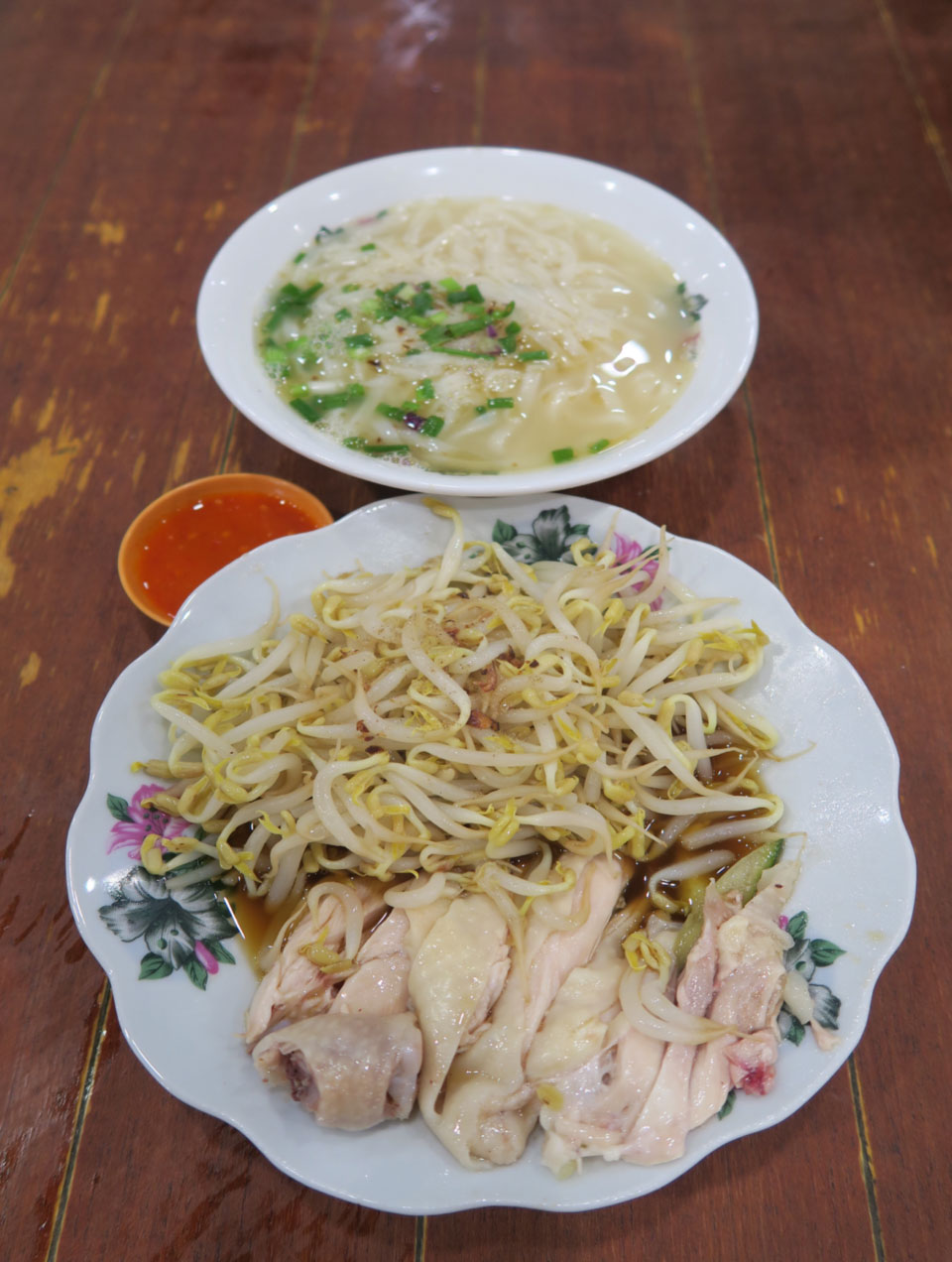
21. Assam laksa
This Penang tamarind-based dish is great for weight loss. At just 377 calories and 2g fat, it’s a much lighter choice than laksa lemak. But the sodium content is about 115% of your entire day’s allowance. Remember not to drink the soup!
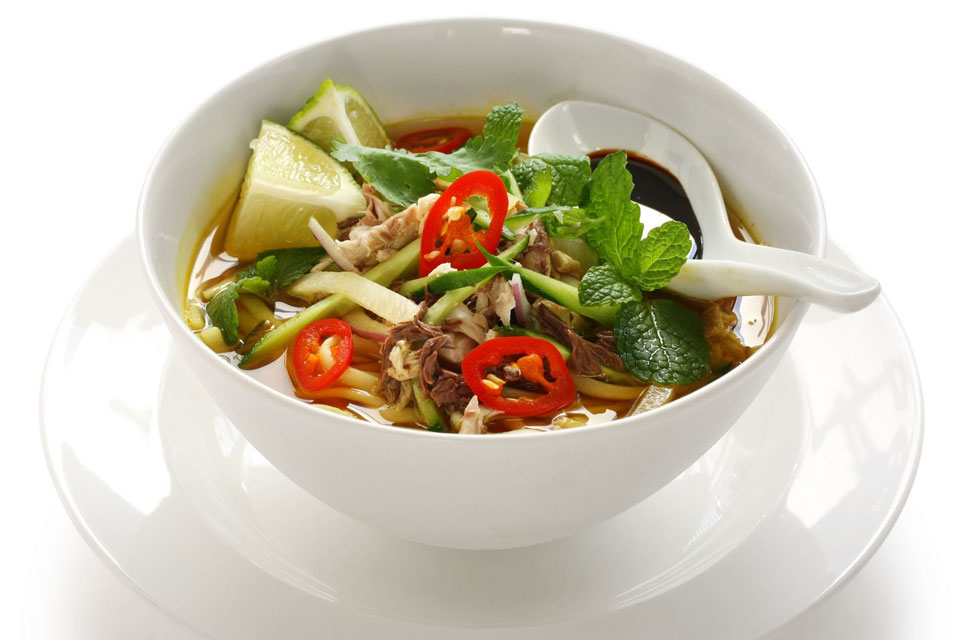
22. Beehoon soto
While either mee or beehoon soto are fine, beehoon is a lower carb noodle. Yellow noodles contain 36% carbs while beehoon contains 31%, and also lower sodium and fat.
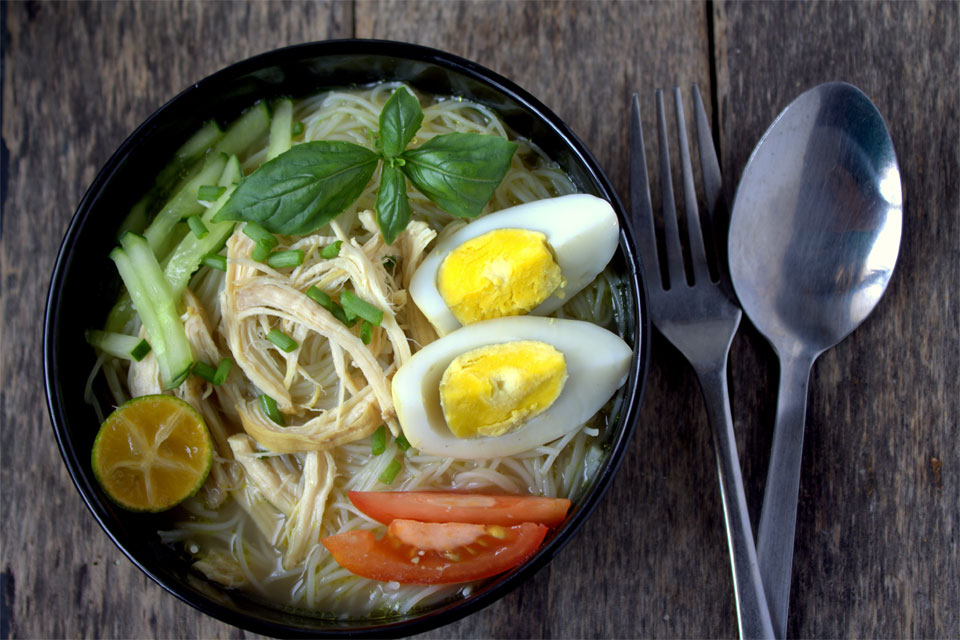
23. Mala Xiang Guo
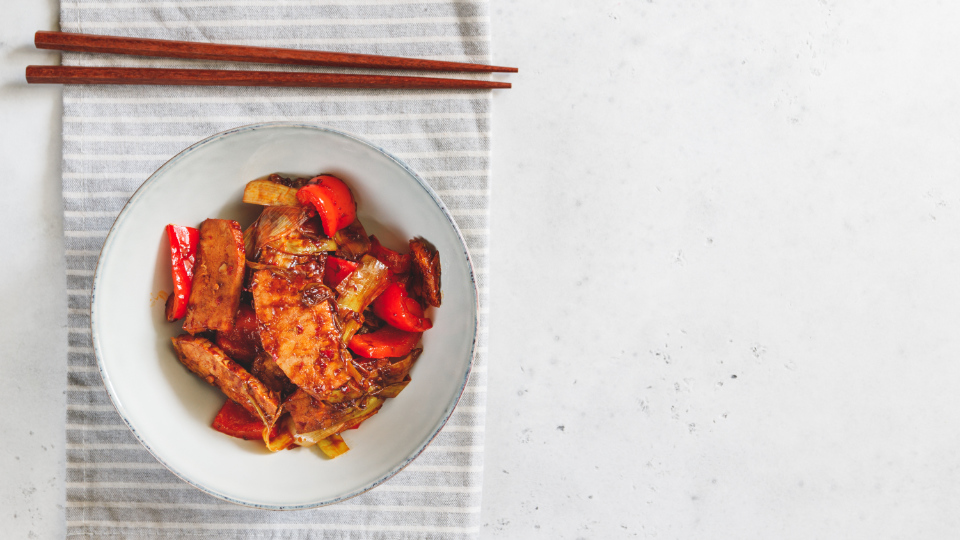
Choose lean meats, tofu, vegetables, and lotus root, sweet potato noodles or buckwheat noodles for higher-fibre carbs. Did you know that sweet potato glass noodles have a lower GI of 39-45, compared to 53 for rice noodles? Lower GI foods release the carbs slowly into the blood preventing big spikes.
24. Bak Chor Mee
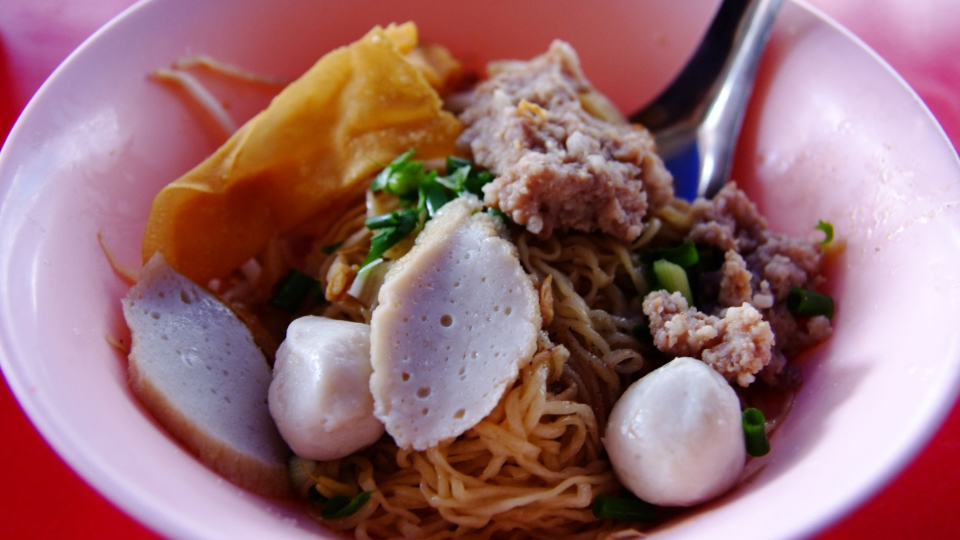
If you get tired of soup noodles, try bak chor mee. The main trick is to request for half noodles, and instead ask for more vegetables to fill up on.
Snack ideas
25. Tauhway or soymilk without syrup
Let’s compare two bowls of tauhway. With syrup, it’s 183 calories and 34g carbs (that’s 6 teaspoons sugar!). Without syrup, it’s just 66 calories and 0g carbs. You know which one is better for your diabetes! Add stevia if you prefer a sweet taste.
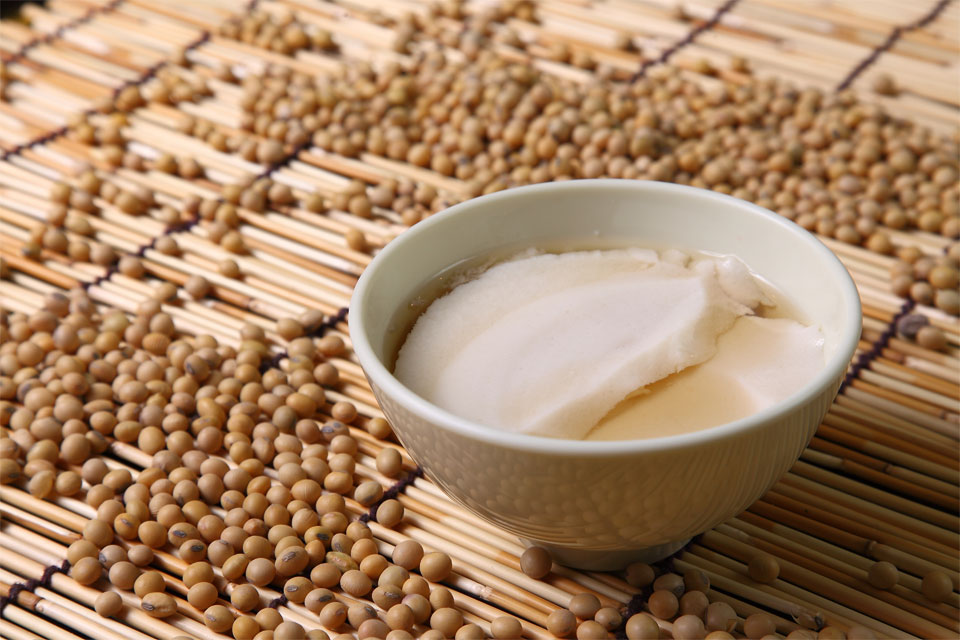
26. One piece of cut fruit
Enjoy the tropical fruits we’re blessed to have in Singapore like red dragonfruit, chiku, pineapple, mangosteen, langsat and guava. Yes, even durian and watermelon are allowed! Just keep it to one handful portion.
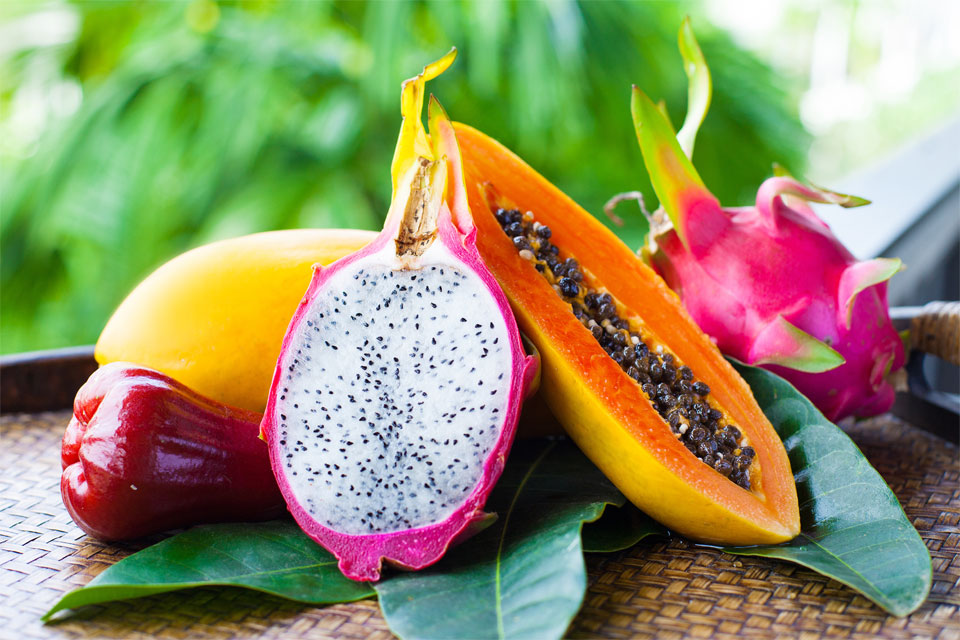
27. Chin chow without syrup
Grass jelly is best enjoyed on its own without syrup, or with no-sugar soymilk. Plain, unsweetened chin chow contains just 3% carbohydrates, contains antioxidants that can regulate blood glucose levels, and is a great food for diabetes. If it’s too bitter for you, add some fruit or stevia to sweeten naturally.
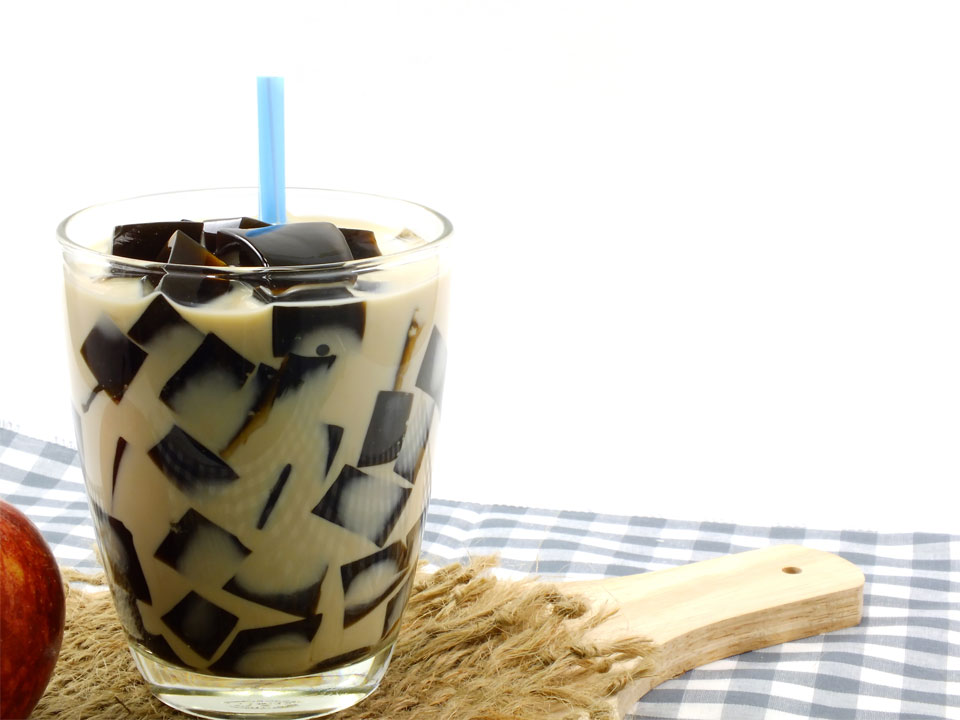
28. Kueh tutu
Although this isn’t the healthiest snack, being made with refined rice flour, one piece of peanut kueh tutu has just 80 calories, 2g fat, and 14g carbohydrates. The trick is to stick to just one pop!
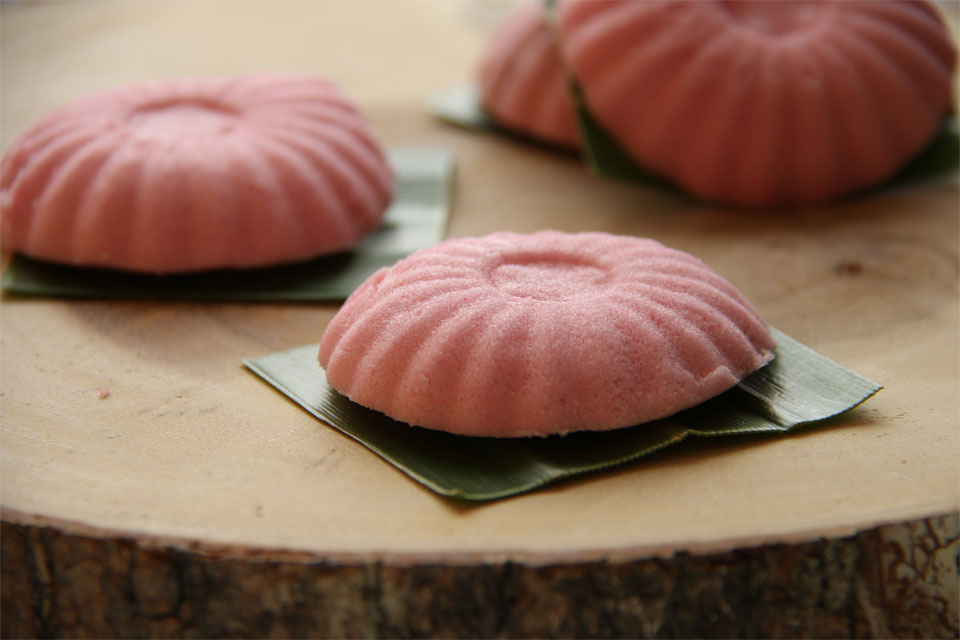
29. Prawn Chee Cheong fun
One roll of prawn or meat chee cheong fun has 15g carbs and 160 calories. This is a few more carbohydrates than the other options but something you could savour once in a while. Just go easy on the sauce and avoid plain chee cheong fun, a ‘straight’ carb containing 11g more carbs than the prawn roll.
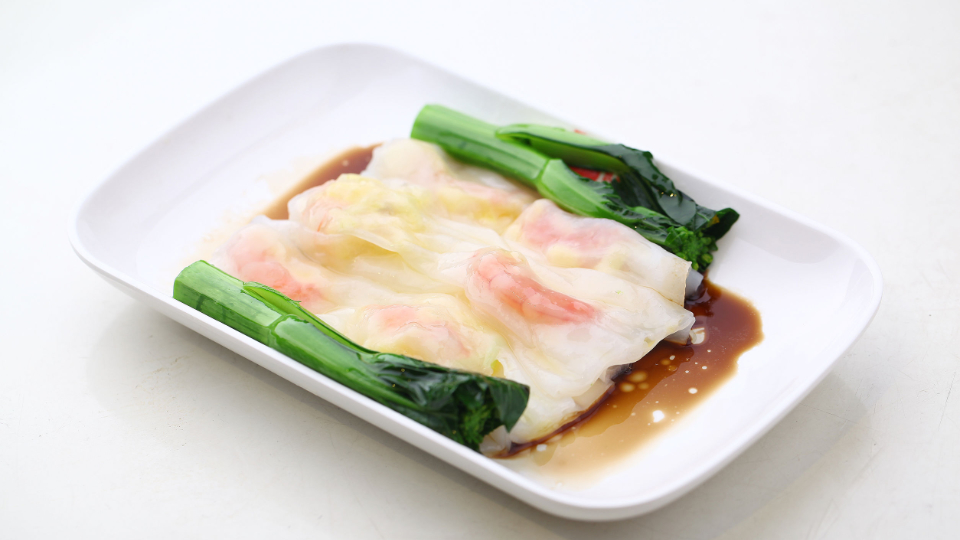
30.Tofu Skin and gingko nut soup
At 100 calories and 12g carbohydrates, this is one of the few local desserts that can make it to this list. Use your discretion on whether you should finish up the liquid portion of the soup though – if it tastes very sweet, it’s likely the stall was more heavy-handed with sugar!
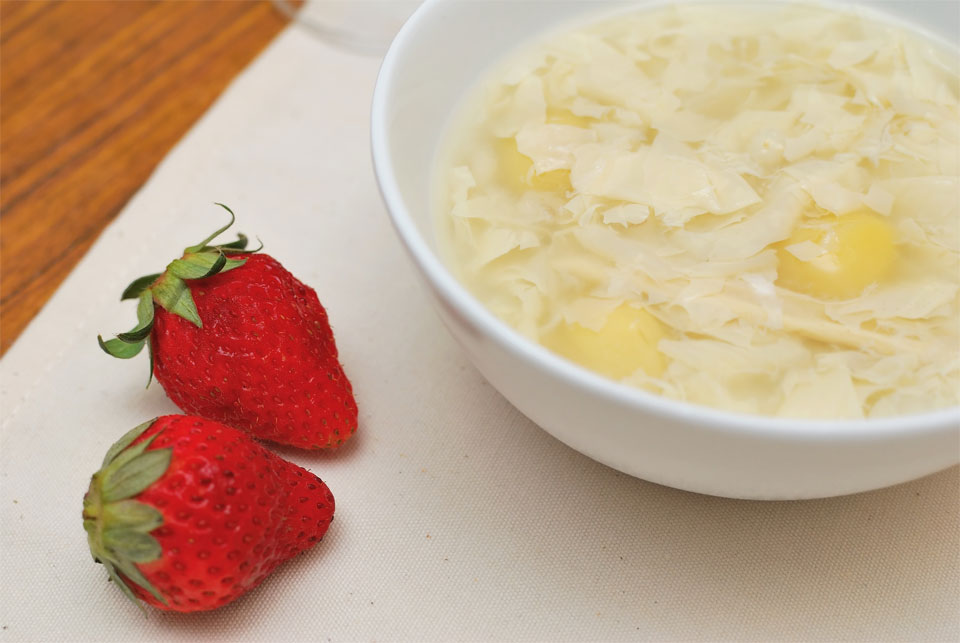
This list is just the tip of the iceberg: there are many other diabetes friendly local foods around in Singapore! Be creative and open to new choices or asking the cook to reduce the fat, salt or carb portions of your favourite hawker foods.
Know What You Eat
Eating healthy while enjoying your meals is easy if you make a conscious effort. And an interesting fact is that your taste buds change every 2 weeks: that means what you like to eat can change, and your tongue can adapt and learn to like healthier choices!
You can find out more about our local food’s nutrition values on Health Promotion Board. It would be good to talk to your dietitian or doctor about healthy food choices specific to your needs.
Additionally, GlycoLeap is a smart coach that guides you to transform your life with healthy habits with expert dietitian support everyday, any time.



